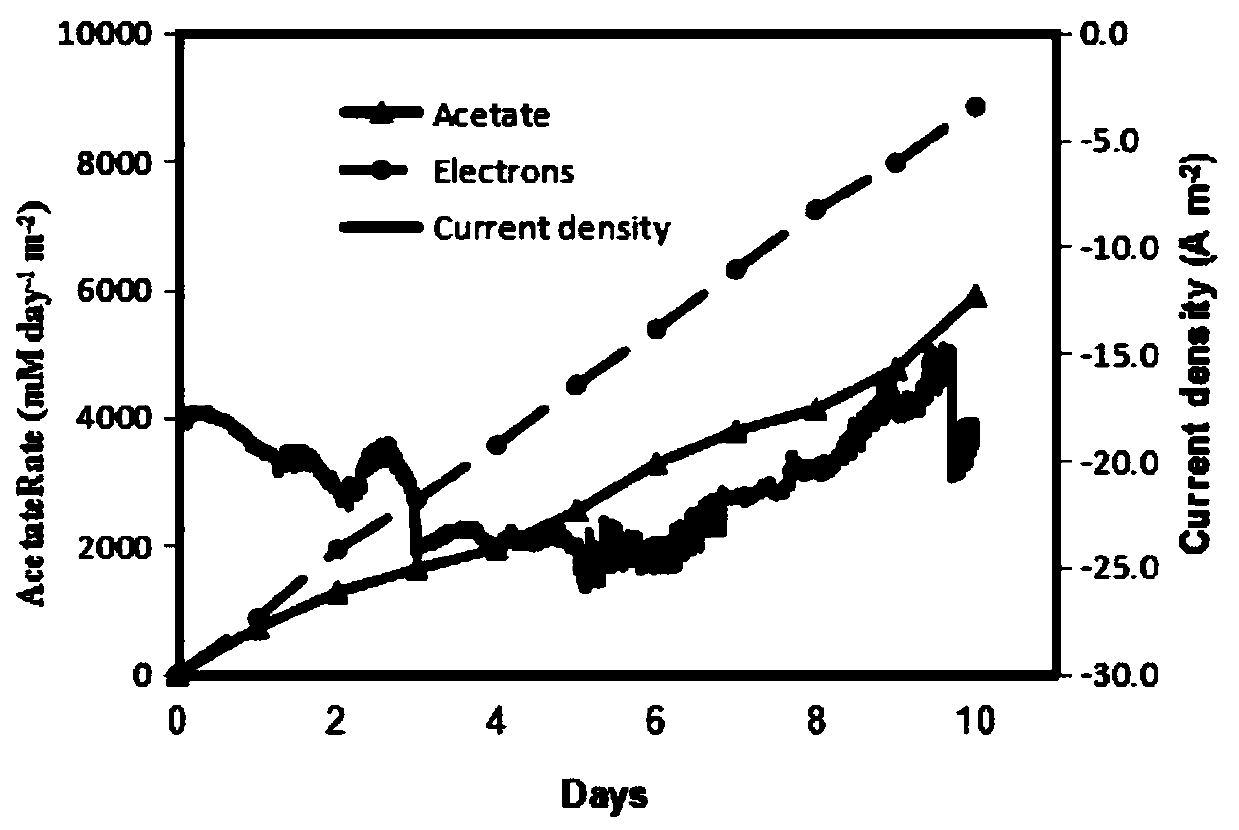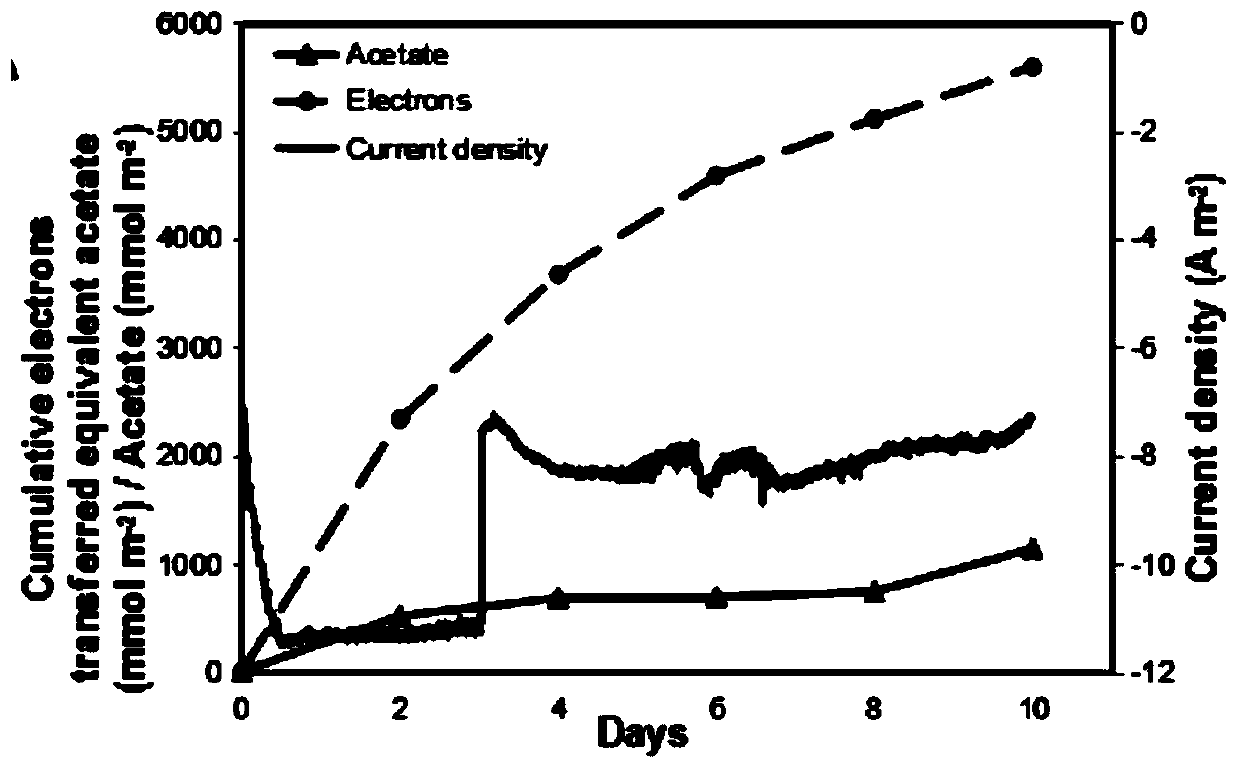A graphene-copper foam composite cathode to improve bioreduction of CO 2 Method for electrosynthesis of acetic acid
A composite cathode and N2-CO2 technology, applied in the field of bioelectrochemistry, can solve problems such as low probability of success and complicated process, and achieve the effects of low cost, environmental friendliness, and increased rate of acetic acid production
- Summary
- Abstract
- Description
- Claims
- Application Information
AI Technical Summary
Problems solved by technology
Method used
Image
Examples
Embodiment 1
[0033]Enhanced bioreduction of CO using graphene-copper foam composite cathode 2 A method for electrosynthesizing acetic acid, comprising the steps of:
[0034] (1) Culture of microorganisms: the acetogenic bacterium Sporomusa ovata DSM 2662 preserved in the cryopreservation tube was stored in N 2 -CO 2 (80:20) atmosphere, activated in the 311 medium containing 40mM betaine; 2 -H 2 (20:80) expanded growth in 311 medium under atmosphere (without betaine);
[0035] (2) Construction of the double-chamber H-type electrolytic cell: the double-chamber H-type electrolytic cell includes an anode, an anode chamber, a cathode and a cathode chamber. The anode chamber and the cathode chamber are separated by a proton exchange membrane (nafion115). The anode is generally made of low-priced graphite Electrode, the cathode adopts graphene-copper foam composite cathode, inserts the reference electrode Ag / AgCl on the cathode side, and adds 311 culture medium in both the anode chamber and t...
PUM
| Property | Measurement | Unit |
|---|---|---|
| current efficiency | aaaaa | aaaaa |
| current efficiency | aaaaa | aaaaa |
| current efficiency | aaaaa | aaaaa |
Abstract
Description
Claims
Application Information
 Login to View More
Login to View More - R&D
- Intellectual Property
- Life Sciences
- Materials
- Tech Scout
- Unparalleled Data Quality
- Higher Quality Content
- 60% Fewer Hallucinations
Browse by: Latest US Patents, China's latest patents, Technical Efficacy Thesaurus, Application Domain, Technology Topic, Popular Technical Reports.
© 2025 PatSnap. All rights reserved.Legal|Privacy policy|Modern Slavery Act Transparency Statement|Sitemap|About US| Contact US: help@patsnap.com



